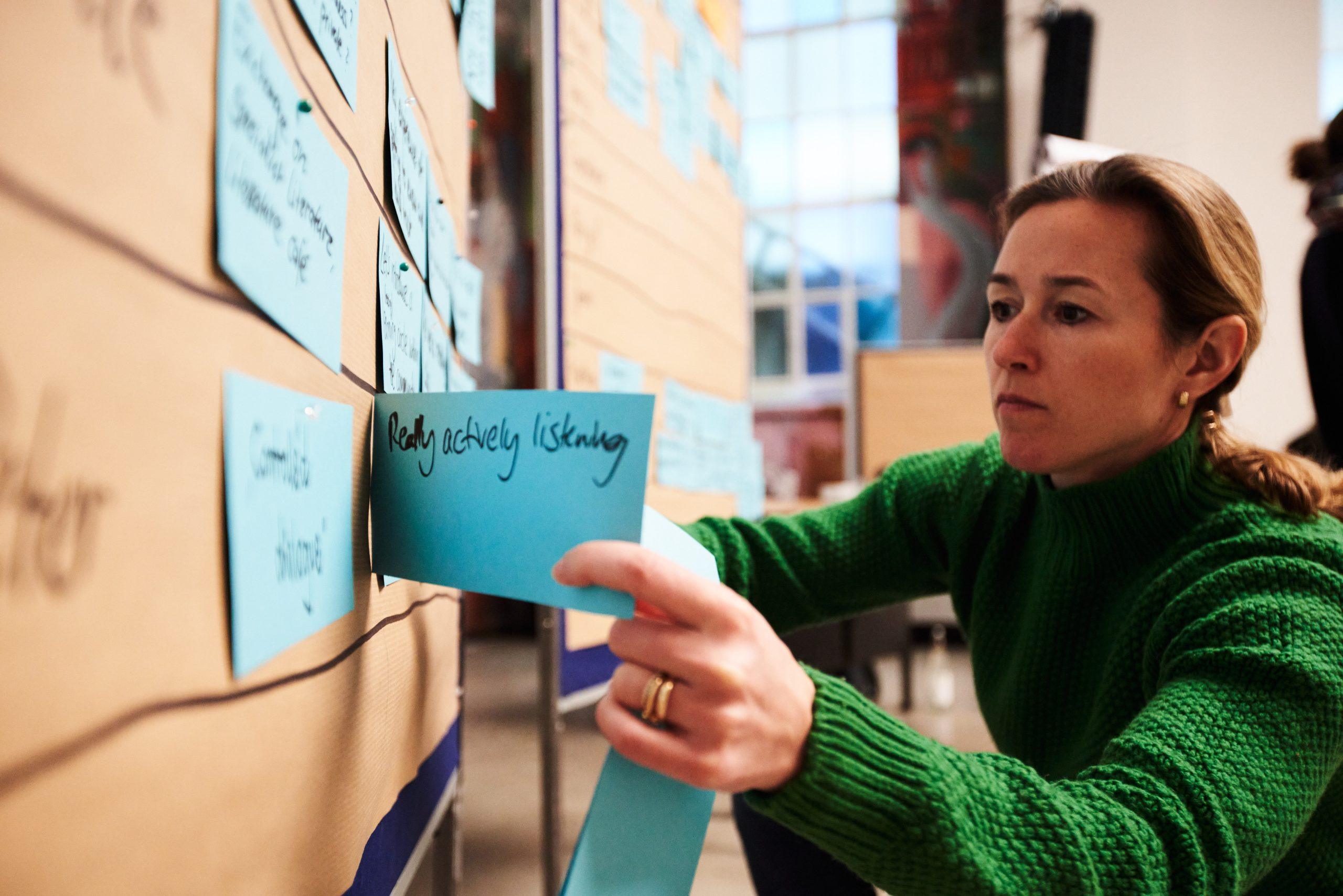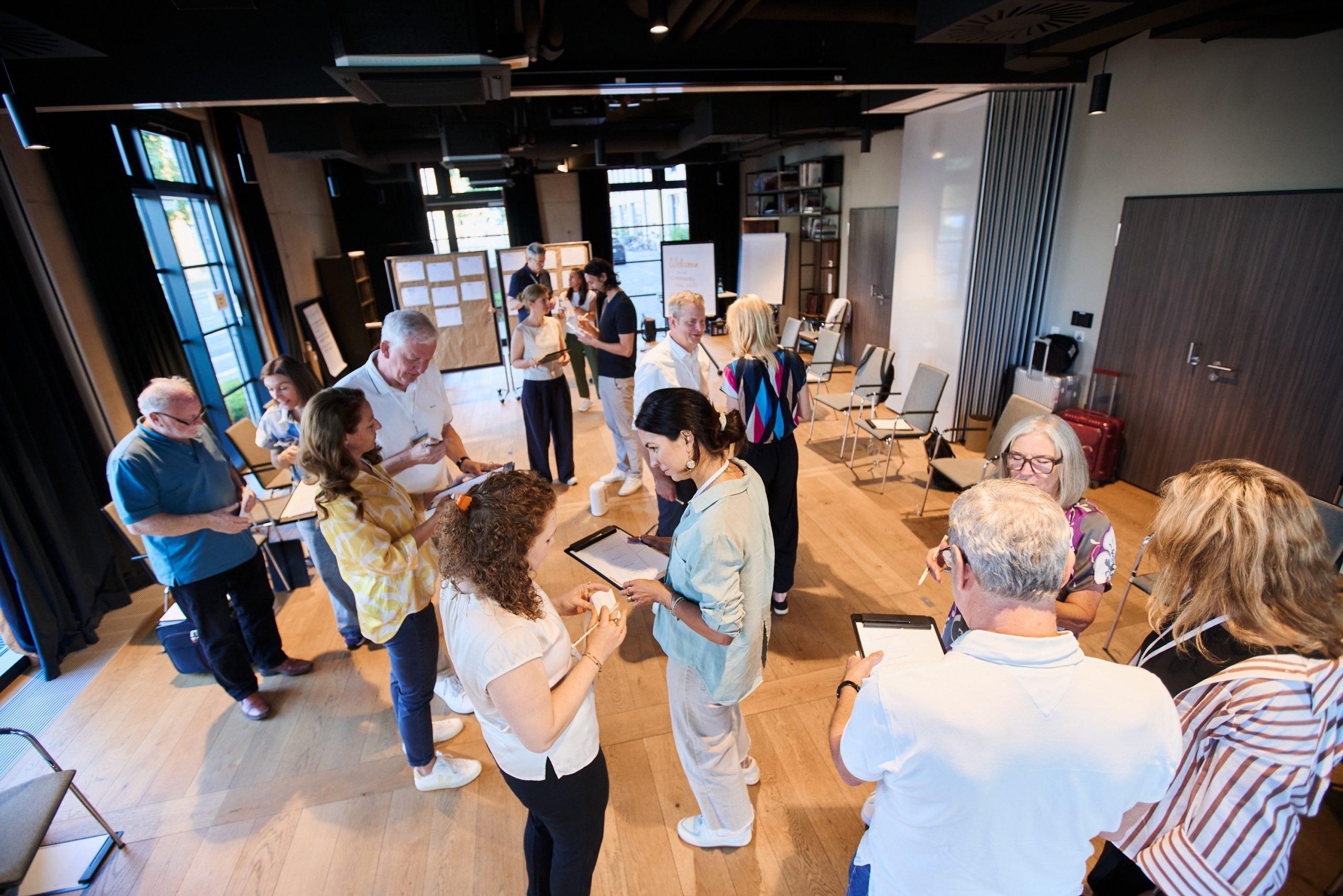Generations in the workplace: Between prejudice and trust – how real connection works

Generations in the workplace: Baby boomers, Gen X, millennials and Gen Z meet every day in project teams, management committees or in the corridor. This intergenerational collaboration presents companies with new opportunities and challenges. Particularly in times of skills shortages, cultural change and New Work, one key question is coming into focus: how can real collaboration between the generations succeed? This article shows where there is a problem, what lies behind it and how to create connections instead of prejudices.
Why thinking in terms of generations falls short – and what really connects us
In many organizations today, four or even five generations work together: Baby boomers, Generation X, millennials and Generation Z come together in meetings, project work or management meetings. The resulting generational diversity in the workplace is both an opportunity and a challenge. Terms such as Gen Z or Millennials help to describe certain patterns. But in practice, these categories often fall short: you can come from the same generation and think completely differently. Or you can come from different generations and be very similar.
Generational attributions offer orientation – but often no solution
Terms such as Generation Z or millennials help to make social developments tangible. They create a common language for changes in work culture, leadership or communication. But when they become the only framework for interpretation, stereotypes and misunderstandings quickly arise. After all, not every Gen Z person demands remote only. And not every boomer adheres to rigid hierarchies.
Similarity and difference do not arise from the year of birth
There are baby boomers who work more agilely than some Gen Z. And millennials who communicate more conservatively than many Generation X colleagues. What distinguishes or connects people has less to do with their age than with their attitude, their experiences and the context in which they work. If you only look at age, you overlook the actual dynamics in teams: personality structures, understanding of roles, situational expectations.
What teams need today: Creating connection across generations
Many companies are focusing on “generational inclusion” to improve the way they deal with generations in the workplace. However, well-intentioned programs often fall short because they aim to manage differences instead of truly understanding them.
If you think exclusively in categories such as “typical Gen Z” or “classic boomer”, you run the risk of turning people into labels. Unconsciously, expectations arise before a conversation has even taken place. This can prevent connection before it even begins.
The view we take at Movendo does not ask the question: “What is your generation?”
Instead:
“What has shaped you?”
“What do you need to contribute?” “What does good collaboration look like for you?”
Because people cannot be reduced to their year of birth. They bring their history, their experiences and their attitude with them – and that is where real understanding comes in.
Impetus for change straight to your inbox.
Our newsletter gives you real impetus for leadership, change and collaboration. You will receive exclusive insights into our projects, new formats and events as well as practical inspiration from our work with people and organizations. If you are looking for fresh perspectives, want to actively shape change or simply want to know what drives us – then this newsletter is just right for you.

Building bridges instead of thinking in pigeonholes – how collaboration between generations succeeds
1. enable a change of perspective
Good collaboration does not start with new tools or rules, but with genuine understanding. Especially in multigenerational teams, different backgrounds, values and life experiences come together. What one person takes for granted may seem strange to another.
Targeted reflection questions help to understand these differences not as a problem, but as an invitation to dialog. For example:
What has particularly shaped you in your professional life?
What prejudices do you encounter time and again and how do you deal with them?
What do you need to feel heard?
In our workshops, we create structured spaces in which such questions are given room. We develop tandem formats and use impulses from systemic practice to create not just understanding, but genuine connections that have an impact on the day-to-day work of multigenerational teams.
2. strengthen psychological safety
People only show themselves where they feel safe. Psychological safety is the basis for constructive collaboration – especially when people from different backgrounds, generations or roles come together.
Security” is not a universal concept: some people need clear structures to get involved. Others need emotional openness in order to share ideas. Still others want a space where mistakes are allowed and learning is possible without fear of being judged.
In our coaching and training sessions, we work with managers and teams to create psychological safety in the team, for example through:
Feedback rituals that create trust instead of fear
Exercises for dealing with uncertainty
Reflection methods to clarify unspoken expectations
Because only when everyone feels seen, heard and taken seriously does collaboration across generational boundaries become truly productive.
3. consciously combine strengths
Every generation brings valuable skills to the table. When these are consciously used and combined with each other, real added value is created. Experience, strategic thinking, digital expertise and fresh perspectives do not have to contradict each other – they can complement each other.
Practical examples include reverse mentoring formats, cross-generational project work or exchange formats at eye level. For these formats to be effective, they need a suitable structure and a clear objective.
We develop individual workshops and training courses in which cross-generational collaboration can be experienced in practice. Together, we design suitable approaches for every organization.
4. make stereotypes visible and dissolve them
Prejudices and attributions often have a subliminal effect in everyday working life and block intergenerational collaboration if they are not discussed. They influence decisions, communication and collaboration and stand in the way of genuine connection. The first step towards change is to make these stereotypes visible in the first place.
This requires spaces in which people can speak honestly, listen and question their own thought patterns. Without apportioning blame, but with a clear attitude. Humor and structure help to start a conversation and question entrenched images.
Our “Generation Connect” workshop gets cross-generational teams talking to each other. With impulses, exercises and opportunities for discussion, we encourage an open exchange with the aim of breaking down prejudices and building trust.
Want to question your own pigeonholes? An overview of assumptions about generations
Baby boomers (1946-1964): The loyal ones
The baby boomer generation grew up with the promise of prosperity, security and advancement. Shaped by the economic miracle, social upheaval and traditional role models, work is far more than just a means to an end for many. It is the meaning of life and identity.
In the working world, boomers are seen as conscientious, persistent and loyal to “their” company. They have built their careers over decades, often within stable structures, and are proud of what they have achieved.
Typical Boomer at work:
“I’ve been with the same company for 40 years and I’m proud of it.” “No pain, no gain.”
What they need: Respect, recognition of experience, clear responsibilities.
Risk: Are quickly labeled as “not open to change”, although they are often very solution-oriented if you involve them.
Generation X (1965-1979): The quiet doers
They are the first “sandwich generation” between boomers and millennials, often caught between hierarchy and change. Having grown up with crises, upheavals and the introduction of technology, they are considered pragmatic, independent and skeptical of institutions.
Gen X want to perform at work, but not at any price. Family, free time and work-life balance are important to them. Many are now in management positions and rely on personal responsibility instead of micromanagement.
Typical Gen X at work:
“I need my weekend, otherwise I’ll go crazy.” “I’d rather sort it out myself.”
What they need: Freedom to implement, appreciation for their experience, clear demarcation from private life.
Risk: Can be perceived as distant or “between two stools”.
Millennials (1980-1994): The seekers of meaning
Millennials are the first “digital immigrants”: they grew up with the internet, later shaped by social media, globalization and uncertainties in the job market. They are well educated, networked and in search of meaning, development and belonging.
In the world of work, they want feedback, flexibility and flat hierarchies. They are willing to perform, but only in an environment that matches their values. Changing jobs is not a flaw, but a sign of self-determination.
Typical millennial at work:
“I’m not looking for a job, I’m looking for a task.” “Why do we actually do it like this?”
What they need: Development opportunities, real feedback, identification with the company.
Risk: Quickly labeled as “demanding” or “indecisive”.
Generation Z (1995-2012): The clear ones
Gen Z has grown up with crises, digitalization and growing social awareness. Issues such as mental health, diversity and sustainability are not debates for them, but basic requirements. They are self-confident, critical and demand a new type of work culture.
In everyday working life, Gen Z wants security, not through control, but through psychological security. They think hybrid, want to help shape things and set clear boundaries. The purpose of a company is often more important than the salary.
Typical Gen Z at work: “If it gets toxic, I’m out.” “Is this also available remotely?”
What they need: Trust, flexible models, a real say.
Risk: Are quickly judged as “sensitive” or “not resilient”, although they are usually very reflective.
Generation Alpha (from 2013): The future
This generation is just entering the stage and many are still children. What characterizes them: AI, touchscreens, instant availability of knowledge and digital self-evidence. Work, learning and life will no longer be separable for them. They think in images, in stories, in platforms, and are growing up in a world in which self-realization and technological support are a matter of course.
What we expect from Gen Alpha: Meaningful, interactive working environments. Autonomy right from the start. Strong individualization and creative self-presentation.
Typical Gen Alpha (soon):
“Why should I learn this, my iPad already knows it?” “How many followers does the company have?”
What they need: Visual communication, opportunities for co-design, orientation in complexity.
Risk: Is quickly underestimated or confronted with exaggerated expectations.
Start a conversation now instead of continuing to think in pigeonholes.
Successful collaboration between generations in the workplace requires more than good intentions – namely a conscious approach to different work values, communication styles and expectations. Less misunderstanding and more genuine cooperation starts with a first step: space for dialog, openness and trust.




